Papers by Vladimir Avila-Reese
Estudiamos la evolución de galaxias de disco utilizando modelos evolutivos con condiciones inicia... more Estudiamos la evolución de galaxias de disco utilizando modelos evolutivos con condiciones iniciales y de frontera asociadas al escenario de formación jerárquico. Nos concentramos en predecir la historia de formación estelar, la evolución de tamaño y brillo superficial y la evolución de las relaciones de Tully-Fisher. Presentamos comparaciones con observaciones disponibles. We study the evolution of disk galaxies using galaxy evolutionary models with initial and boundary conditions linked to the hierarchical formation scenario. We focus our attention on predictions of the star formation history, size and surface brightness evolution and the evolution of the H − and B−band Tully-Fisher relations. Comparisons with available observational data are presented.
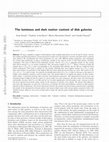
We have compiled a sample of disk galaxies with available photometry in the B and K bands, veloci... more We have compiled a sample of disk galaxies with available photometry in the B and K bands, velocity line-widths and HI integral fluxes. Several parameters which trace the luminous, baryonic and dark matter contents were inferred. We investigated how these parameters do vary with different galaxy properties, and confronted the results with predictions of galaxy evolutionary models in the context of the Λ Cold Dark Matter (ΛCDM) cosmogony. The ratio of disk-to-total maximum circular velocity, (V d,m /Vt,m), depends mainly on the central disk surface density Σ d,0 (or surface brightness, SB), increasing roughly as Σ d,0 0.15. While a fraction of high SB galaxies have a (V d,m /Vt,m) ratio corresponding to the maximum disk solution, the low SB are completely dark matter dominated. The trend is similar for the models, although they have slightly smaller (V d,m /Vt,m) ratios than observations, in particular at the highest SBs and when small baryon fractions are used. The scatter in the (V d,m /Vt,m) − Σ d,0 plot is large. An analysis of residuals shows that (V d,m /Vt,m) tends to decrease as the galaxy is redder, more luminous (massive), and of earlier type. The models allow us to explain the physics of these results, which imply a connexion between halo structure and luminous properties. The dynamical-to-baryon mass and dynamical mass-to-light (B and K) ratios at a given radius were also estimated. All these ratios, for observations and models, decrease with Σ d,0 (or SB) and do not correlate significantly with the galaxy scale, contrary to what has been reported in previous works, based on the analysis of rotation curve shapes. We discuss this difference and state the importance to solve the controversy on whether the dark and luminous contents in disk galaxies depend on SB or luminosity. The broad agreement between the models and observations presented here regarding the trends of the dynamical-to-baryon matter and mass-to-light ratios with several galaxy properties favors the ΛCDM scenario. However, the excess of dark matter inside the optical region of disk galaxies remains as the main difficulty.
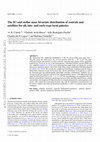
Monthly Notices of the Royal Astronomical Society, 2021
We characterize the conditional distributions of the H i gas-to-stellar mass ratio, $\mbox{$R_{\r... more We characterize the conditional distributions of the H i gas-to-stellar mass ratio, $\mbox{$R_{\rm H\,\rm{i}}$}\equiv \mbox{$M_{\rm H\,\rm{i}}$}/\mbox{$M_{\ast }$}$, given the stellar mass, M*, of local galaxies from M* ∼ 107–1012 M⊙ separated into centrals and satellites as well as into late- and early-type galaxies (LTGs and ETGs, respectively). To do so, we use (1) the homogeneous ‘eXtended GALEX Arecibo SDSS Survey’, xGASS (Catinella et al. 2018), by re-estimating their upper limits and taking into account them in our statistical analysis; and (2) the results from a large compilation of H i data reported in Calette et al. (2018). We use the $R_{\rm H\,\rm{i}}$ conditional distributions combined with the Galaxy Stellar Mass Function to infer the bivariate $M_{\rm H\,\rm{i}}$ and M* distribution of all galaxies as well of the late/early-type and central/satellite subsamples and their combinations. Satellites are on average less H i gas-rich than centrals at low and intermediate ma...

We discuss the dissipation of turbulent kinetic energy Ek in the global interstellar medium (ISM)... more We discuss the dissipation of turbulent kinetic energy Ek in the global interstellar medium (ISM) by means of two-dimensional, MHD, non-isothermal simulations in the presence of model radiative heating and cooling. We argue that dissipation in two dimensions is representative of that in three dimensions as long as it is dominated by shocks rather than by a turbulent cascade. Contrary to previous treatments of dissipation in the ISM, in this work we consider realistic, stellar-like forcing: energy is injected at a few isolated sites in space, over relatively small scales, and over short time periods. This leads to the coexistence of forced and decaying regimes in the same flow, to a net propagation of turbulent kinetic energy from the injection sites to the decaying regions, and to different characteristic dissipation rates and times in the forced sites and in the global flow. We find that the ISM-like flow dissipates its turbulent energy rapidly. In simulations with forcing, the inp...
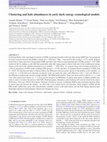
Monthly Notices of the Royal Astronomical Society, 2021
Cold Dark Matter with cosmological constant (ΛCDM) cosmological models with early dark energy (ED... more Cold Dark Matter with cosmological constant (ΛCDM) cosmological models with early dark energy (EDE) have been proposed to resolve tensions between the Hubble constant $H_0=100\, h$ km ṡ−1Ṁpc−1 measured locally, giving h ≈ 0.73, and H0 deduced from Planck cosmic microwave background (CMB) and other early-Universe measurements plus ΛCDM, giving h ≈ 0.67. EDE models do this by adding a scalar field that temporarily adds dark energy equal to about 10 per cent of the cosmological energy density at the end of the radiation-dominated era at redshift z ∼ 3500. Here, we compare linear and non-linear predictions of a Planck-normalized ΛCDM model including EDE giving h = 0.728 with those of standard Planck-normalized ΛCDM with h = 0.678. We find that non-linear evolution reduces the differences between power spectra of fluctuations at low redshifts. As a result, at z = 0 the halo mass functions on galactic scales are nearly the same, with differences only 1–2 per cent. However, the differences...

The Astrophysical Journal Supplement Series, 2019
Twenty years have passed since first light for the Sloan Digital Sky Survey (SDSS). Here, we rele... more Twenty years have passed since first light for the Sloan Digital Sky Survey (SDSS). Here, we release data taken by the fourth phase of SDSS (SDSS-IV) across its first three years of operation (July 2014-July 2017). This is the third data release for SDSS-IV, and the fifteenth from SDSS (Data Release Fifteen; DR15). New data come from MaNGA-we release 4824 datacubes, as well as the first stellar spectra in the MaNGA Stellar Library (MaStar), the first set of survey-supported analysis products (e.g. stellar and gas kinematics, emission line, and other maps) from the MaNGA Data Analysis Pipeline (DAP), and a new data visualisation and access tool we call "Marvin". The next data release, DR16, will include new data from both APOGEE-2 and eBOSS; those surveys release no new data here, but we document updates and corrections to their data processing pipelines. The release is cumulative; it also includes the most recent reductions and calibrations of all data taken by SDSS since first light. In this paper we describe the location and format of the data and tools and cite technical references describing how it was obtained and processed. The SDSS website (www.sdss.org)
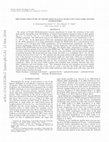
The Astrophysical Journal, 2016
By means of N-body+Hydrodynamics zoom-in simulations we study the evolution of the inner dark mat... more By means of N-body+Hydrodynamics zoom-in simulations we study the evolution of the inner dark matter and stellar mass distributions of central dwarf galaxies formed in halos of virial masses M v = 2 − 3 × 10 10 h −1 M ⊙ at z = 0, both in a Warm Dark Matter (WDM) and Cold Dark Matter (CDM) cosmology. The half-mode mass in the WDM power spectrum of our simulations is M f = 2 × 10 10 h −1 M ⊙. In the dark matter (DM) only simulations halo density profiles are well described by the NFW parametric fit in both cosmologies, though the WDM halos have concentrations lower by factors of 1.5-2.0 than their CDM counterparts. In the hydrodynamic simulations, the effects of baryons significantly flatten the inner density, velocity dispersion, and pseudo phase-space density profiles of the WDM halos but not of the CDM ones. The density slope, measured at ≈ 0.02R v , α 0.02 , becomes shallow in periods of 2 to 5 Gyr in the WDM runs. We explore whether this flattening process correlates with the global star formation (SF), M s /M v ratio, gas outflow, and internal specific angular momentum histories. We do not find any clear trends, but when α 0.02 is shallower than −0.5, M s /M v is always between 0.25 % and 1 %. We conclude that the main reason of the formation of the shallow core is the presence of strong gas mass fluctuations inside the inner halo, which are a consequence of the feedback driven by a very bursty and sustained SF history in shallow gravitational potentials. Our WDM halos, which assemble late and are less concentrated than the CDM ones, obey these conditions. There are also (rare) CDM systems with extended mass assembly histories that obey these conditions and form shallow cores. The dynamical heating and expansion processes behind the DM core flattening apply also to the stars in a such a way that the stellar age and metallicity gradients of the dwarfs are softened, their stellar half-mass radii strongly grow with time, and their central surface densities decrease.

Data Release 14 (DR14) is the second data release of the fourth phase of the Sloan Digital Sky Su... more Data Release 14 (DR14) is the second data release of the fourth phase of the Sloan Digital Sky Survey (SDSS-IV). DR14 contains SDSS observations through July 2016. DR14 includes the following: The first optical spectra of galaxies and quasars from the SDSS component extended Baryon Oscillation Spectroscopic Survey (eBOSS), including spectra from the eBOSS subprograms SPectroscopic IDentfication of ERosita Sources (SPIDERS) survey and Time-Domain Spectroscopic Survey (TDSS) The first stellar infrared spectra and stellar parameter determinations from the SDSS component Apache Point Observatory Galaxy Evolution Experiment 2 (APOGEE-2) More data cubes from integral field unit (IFU) spectroscopic observations of nearby galaxies from the SDSS component Mapping Nearby Galaxies at APO (MaNGA) Value Added Catalogs (VACs) for all three SDSS components (eBOSS, APOGEE-2 and MaNGA), including targetting catalogs The most current reprocessed imaging and spectra from the SDSS legacy survey

Revista Mexicana De Astronomia Y Astrofisica, Oct 1, 2018
We compile and homogenize local galaxy samples with available information on morphology, and stel... more We compile and homogenize local galaxy samples with available information on morphology, and stellar, HI and/or H 2 masses. After taking into account non gas detections, we determine the HI-and H 2-to-stellar mass relations and their 1σ scatter for late-and early-type galaxies. These relations are fitted to single or double power laws. Late-type galaxies are significantly gas richer than early-type ones, especially at high masses. The H 2-to-HI mass ratios as a function of M * are discussed. We constrain the distribution functions of the HI-and H 2-to-stellar mass ratios. We find that they can be described by a Schechter function for late types and a (broken) Schechter + uniform function for early types. Using the observed galaxy stellar mass function and the volume-complete late-to-early-type galaxy ratio as a function of M * , these distributions are mapped into HI and H 2 mass functions. The mass functions are consistent with those inferred from large surveys. The results presented here can be used to constrain models and simulations of galaxy evolution. RESUMEN Compilamos y homogeneizamos muestras de galaxias locales con información sobre la morfología, la masa estelar, y la de HI y/o H 2 .Tomando en cuenta las nodetecciones en gas determinamos las relaciones masa estelar a masa de HI y H 2 y sus dispersiones, para galaxias tardías y tempranas. Las relaciones se ajustan con leyes de potencia simple o doble. Las galaxias tardías son más ricas en gas que las tempranas. Se discuten los cocientes de masa H 2 a HI en función de M *. Constreñimos las distribuciones de los cocientes de masa de HI y H 2 a masa estelar, y encontramos que se describen bien por una función de Schechter (galaxias tardías) o una función Schechter (cortada) + uniforme (galaxias tempranas). Usamos la función de masa estelar y el cociente de galaxias tempranas a tardías en función de M * para mapear estas distribuciones a funciones de masa de HI y H 2 las cuales concuerdan con las inferidas de los grandes catastros. Los resultados que presentamos pueden usarse para constreñir modelos y simulaciones de evolución de galaxias.
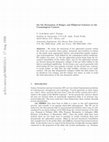
Star Formation in Early Type Galaxies, 1999
We study the formation of hot spheroidal systems within the frame of a scenario where galaxy form... more We study the formation of hot spheroidal systems within the frame of a scenario where galaxy formation and evolution is related to the gentle mass aggregation history and primordial angular momentum of protogalaxies, both defined by the cosmological initial conditions. We explore two cases: (1) the hot spheroidal system forms from the dynamical instabilities of the stellar disks, and (2) the spheroidal systems are formed during the dissipative collapse of the gas before falling to the disk in centrifugal equilibrium. In the former case a good agreement with observations for late type galaxies is found. In the second case, contrary to recent claims, we find that the tidal stability criterion is not easily reached. The gas that dissipatively collapses within the dark matter halos should be very clumpy, and the clumps very dense, in order to avoid the tidal destruction of the star formation unities.

The Astrophysical Journal Supplement Series, 2022
This paper documents the seventeenth data release (DR17) from the Sloan Digital Sky Surveys; the ... more This paper documents the seventeenth data release (DR17) from the Sloan Digital Sky Surveys; the fifth and final release from the fourth phase (SDSS-IV). DR17 contains the complete release of the Mapping Nearby Galaxies at Apache Point Observatory (MaNGA) survey, which reached its goal of surveying over 10,000 nearby galaxies. The complete release of the MaNGA Stellar Library accompanies this data, providing observations of almost 30,000 stars through the MaNGA instrument during bright time. DR17 also contains the complete release of the Apache Point Observatory Galactic Evolution Experiment 2 survey that publicly releases infrared spectra of over 650,000 stars. The main sample from the Extended Baryon Oscillation Spectroscopic Survey (eBOSS), as well as the subsurvey Time Domain Spectroscopic Survey data were fully released in DR16. New single-fiber optical spectroscopy released in DR17 is from the SPectroscipic IDentification of ERosita Survey subsurvey and the eBOSS-RM program. A...
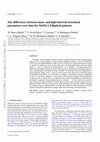
Monthly Notices of the Royal Astronomical Society, 2021
We apply stellar population synthesis analysis to obtain spatially resolved archaeological infere... more We apply stellar population synthesis analysis to obtain spatially resolved archaeological inferences for a large sample of ‘red and dead’ Elliptical galaxies (Classical Ellipticals, CLEs) from the MaNGA/SDSS-IV DR15 survey. From their 2D stellar light and mass maps, we explore the differences between the radial mass and light distributions in the rest-frame bands g, r, and i as functions of look-back time, tlb, or redshift, z. We characterize these differences through the ratios between the following mass- and light-derived global properties: sizes, concentrations, and effective surface densities. We find that the mass-to-light ratios of these properties change with tlb, more the more massive the galaxies are. The CLE galaxy archaeological progenitors are, on average, less compact, concentrated, and dense in light than in mass as z decreases. However, at later times, when also the evolution of the progenitors becomes passive at all radii, there is an upturn in these trends and the ...
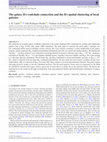
Monthly Notices of the Royal Astronomical Society, 2021
We extend the local stellar galaxy–(sub)halo connection to the atomic hydrogen (H i) component by... more We extend the local stellar galaxy–(sub)halo connection to the atomic hydrogen (H i) component by seeding semi-empirically galaxies into a large N-body dark matter (DM) simulation. The main input to construct the mock galaxy catalogue are: our constrained stellar mass-to-(sub)halo circular velocity (M*–VDM) relation, assuming a scatter independent of any galaxy property, and the empirical $M_{\rm H\, \small {I}}$ conditional probability distributions given M* for central and satellite galaxies. We find that the $\langle \log \mbox{$M_{\rm H\, \small {I}}$}\rangle -\log \mbox{$M_{\rm DM}$}$ relation is not a monotonic increasing function. It increases with mass up to $\mbox{$M_{\rm DM}$}\sim 10^{12}$ M⊙, attaining a maximum of $\langle \log (\mbox{$M_{\rm H\, \small {I}}$}/\mbox{M$_{\odot }$})\rangle \sim 9.2$, and at higher (sub)halo masses, $\langle \log (\mbox{$M_{\rm H\, \small {I}}$})\rangle$ decreases slightly with MDM. The scatter around it is also large and mass dependent. Th...

Monthly Notices of the Royal Astronomical Society, 2021
By fitting stellar populations to the fourth generation of the Sloan Digital Sky Survey (SDSS-IV)... more By fitting stellar populations to the fourth generation of the Sloan Digital Sky Survey (SDSS-IV) Mapping Nearby Galaxies at Apache Point Observatory (MaNGA) survey observations of ∼7000 suitably weighted individual galaxies, we reconstruct the star formation history of the Universe, which we find to be in reasonable agreement with previous studies. Dividing the galaxies by their present-day stellar mass, we demonstrate the downsizing phenomenon, whereby the more massive galaxies hosted the most star formation at earlier times. Further dividing the galaxy sample by colour and morphology, we find that a galaxy’s present-day colour tells us more about its historical contribution to the cosmic star formation history than its current morphology. We show that downsizing effects are greatest among galaxies currently in the blue cloud, but that the level of downsizing in galaxies of different morphologies depends quite sensitively on the morphological classification used, due largely to th...

The Astrophysical Journal Supplement Series, 2020
This paper documents the 16th data release (DR16) from the Sloan Digital Sky Surveys (SDSS), the ... more This paper documents the 16th data release (DR16) from the Sloan Digital Sky Surveys (SDSS), the fourth and penultimate from the fourth phase (SDSS-IV). This is the first release of data from the Southern Hemisphere survey of the Apache Point Observatory Galactic Evolution Experiment 2 (APOGEE-2); new data from APOGEE-2 North are also included. DR16 is also notable as the final data release for the main cosmological program of the Extended Baryon Oscillation Spectroscopic Survey (eBOSS), and all raw and reduced spectra from that project are released here. DR16 also includes all the data from the Time Domain Spectroscopic Survey and new data from the SPectroscopic IDentification of ERosita Survey programs, both of which were co-observed on eBOSS plates. DR16 has no new data from the Mapping Nearby Galaxies at Apache Point Observatory (MaNGA) survey (or the MaNGA Stellar Library “MaStar”). We also preview future SDSS-V operations (due to start in 2020), and summarize plans for the fin...
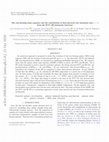
The Astrophysical Journal, 2020
An analytical approach is proposed to study the evolution of the star-forming galaxy (SFG) main s... more An analytical approach is proposed to study the evolution of the star-forming galaxy (SFG) main sequence (MS) and the fraction of dust-obscured star formation (SF) up to z ∼ 4. Far-ultraviolet (FUV) and infrared (IR) star formation rates (SFRs) are described as conditional probability functions of M *. We convolve them with the galaxy stellar mass function (GSMF) of SFGs to derive the FUV and IR luminosity functions (LFs). The two SF modes formalism is used to describe starburst galaxies. By fitting observed FUV and IR LFs, the parameterization of SFRFUV−M * and SFRIR− M * is constrained. Our derived SFRFUV+IR−M * reproduces the evolution of the MS as compared to other observational inferences. At any redshift, we find that the sSFRFUV+IR–M * relation for MS SFGs approaches a power law at the high-mass end. At lower masses, it bends, and eventually, the slope sign changes from negative to positive at very low masses. At z ∼ 0, this change of sign is at M * ∼ 5 × 108 M ⊙, close to th...
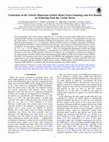
The Astrophysical Journal, 2020
The observational value of the velocity dispersion, u D , is missing in the dark matter (DM) puzz... more The observational value of the velocity dispersion, u D , is missing in the dark matter (DM) puzzle. Nonzero or nonthermal DM velocities can drastically influence large-scale structure and the 21 cm temperature at the epoch of the cosmic dawn, as well as the estimation of DM physical parameters, such as mass and interaction couplings. To study the phenomenology of u D , we model the evolution of DM in terms of a simplistic and generic Boltzmannlike momentum distribution. Using cosmological data from the cosmic microwave background, baryonic acoustic oscillations, and red luminous galaxies, we constrain the DM velocity dispersion for a broad range of masses, < < c-10 eV m 10 eV 3 9 , finding u D- 0.33km s 0 1 (99% CL). Including the Experiment to Detect the Global Epoch of Reionization Signature (EDGES) T 21 measurements, we extend our study to constrain the baryon-DM interaction in the range of DM velocities allowed by our analysis. As a consequence, we present new bounds on two electromagnetic models of DM, namely minicharged particles (MCPs) and the electric dipole moment (EDM). For MCPs, the parameter region that is consistent with EDGES and independent bounds on cosmological and stellar physics is very small, pointing to the subelectronvolt mass regime of DM. A window in the MeV-GeV may still be compatible with these bounds for MCP models without a hidden photon. But the EDM parameter region consistent with EDGES is excluded by Big Bang nucleosynthesis and collider physics. Unified Astronomy Thesaurus concepts: Dark matter (353); Cosmology (343); Large-scale structure of the universe (902); Reionization (1383); Cosmological neutrinos (338); Particle astrophysics (96); Warm dark matter (1787); Cold dark matter (265); Hot dark matter (750); Solar particle emission (1517); Dark matter detectors (355)
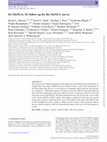
Monthly Notices of the Royal Astronomical Society, 2019
We present the H i-MaNGA programme of H i follow-up for the Mapping Nearby Galaxies at Apache Poi... more We present the H i-MaNGA programme of H i follow-up for the Mapping Nearby Galaxies at Apache Point Observatory (MaNGA) survey. MaNGA, which is part of the Fourth phase of the Sloan Digital Sky Surveys, is in the process of obtaining integral field unit spectroscopy for a sample of ∼10 000 nearby galaxies. We give an overview of the H i 21cm radio follow-up observing plans and progress and present data for the first 331 galaxies observed in the 2016 observing season at the Robert C. Bryd Green Bank Telescope. We also provide a cross-match of the current MaNGA (DR15) sample with publicly available H i data from the Arecibo Legacy Fast Arecibo L-band Feed Array survey. The addition of H i data to the MaNGA data set will strengthen the survey’s ability to address several of its key science goals that relate to the gas content of galaxies, while also increasing the legacy of this survey for all extragalactic science.
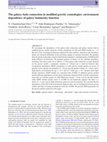
Monthly Notices of the Royal Astronomical Society, 2019
We investigate the dependence of the galaxy–halo connection and galaxy density field in modified ... more We investigate the dependence of the galaxy–halo connection and galaxy density field in modified gravity models using the N-body simulations for f(R) and nDGP models at z = 0. Because of the screening mechanisms employed by these models, chameleon and Vainshtein, haloes are clustered differently in the non-linear regime of structure formation. We quantify their deviations in the galaxy density field from the standard Λ cold dark matter (ΛCDM) model under different environments. We populate galaxies in haloes via the (sub)halo abundance matching. Our main results are as follows: (1) The galaxy–halo connection strongly depends on the gravity model; a maximum variation of ${\sim }40{{\ \rm per\ cent}}$ is observed between halo occupational distribution (HOD) parameters; (2) f(R) gravity models predict an excess of galaxies in low-density environments of ${\sim }10{{\ \rm per\ cent}}$ but predict a deficit of ${\sim }10{{\ \rm per\ cent}}$ at high-density environments for |fR0| = 10−4 a...





Uploads
Papers by Vladimir Avila-Reese